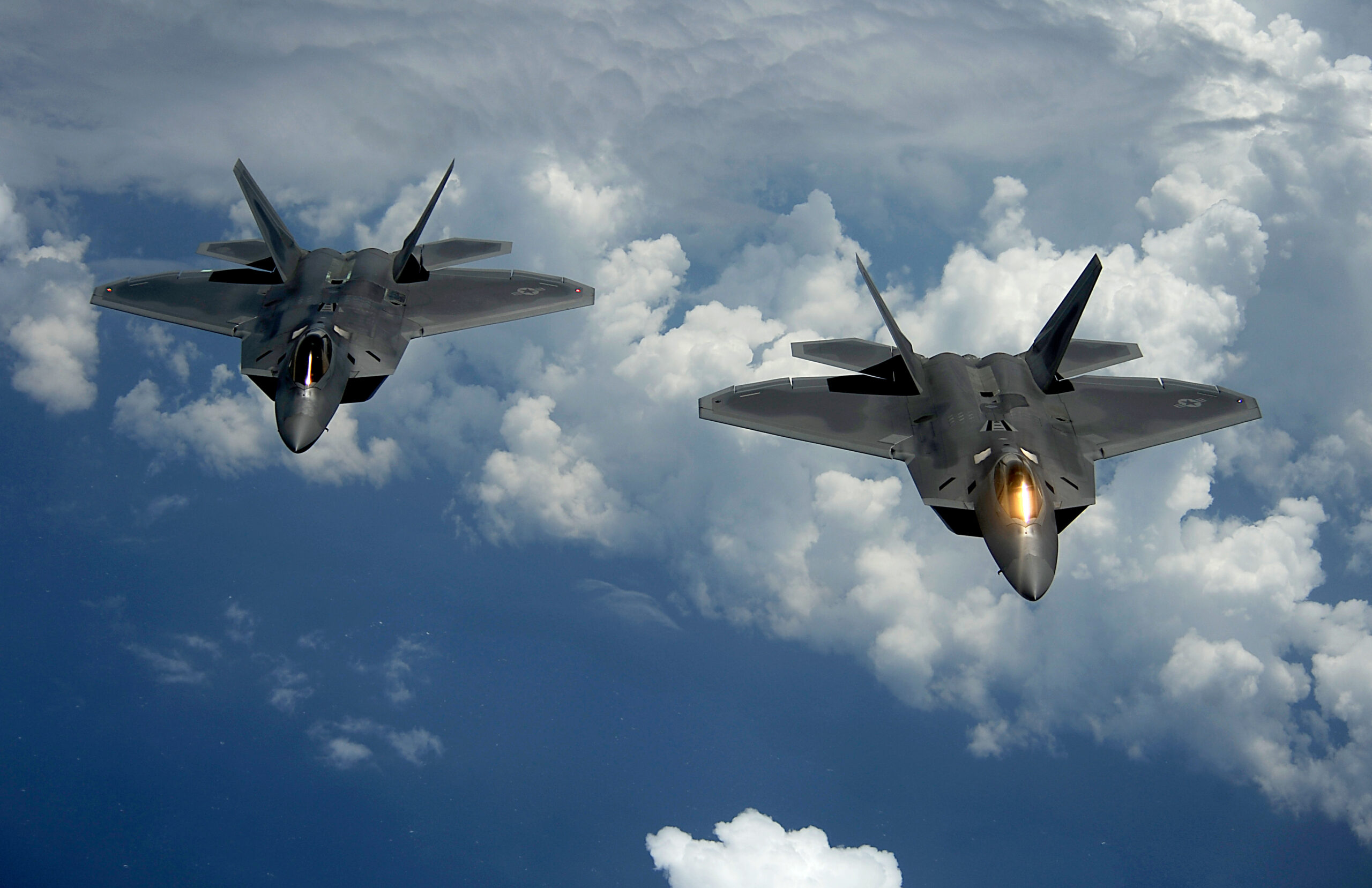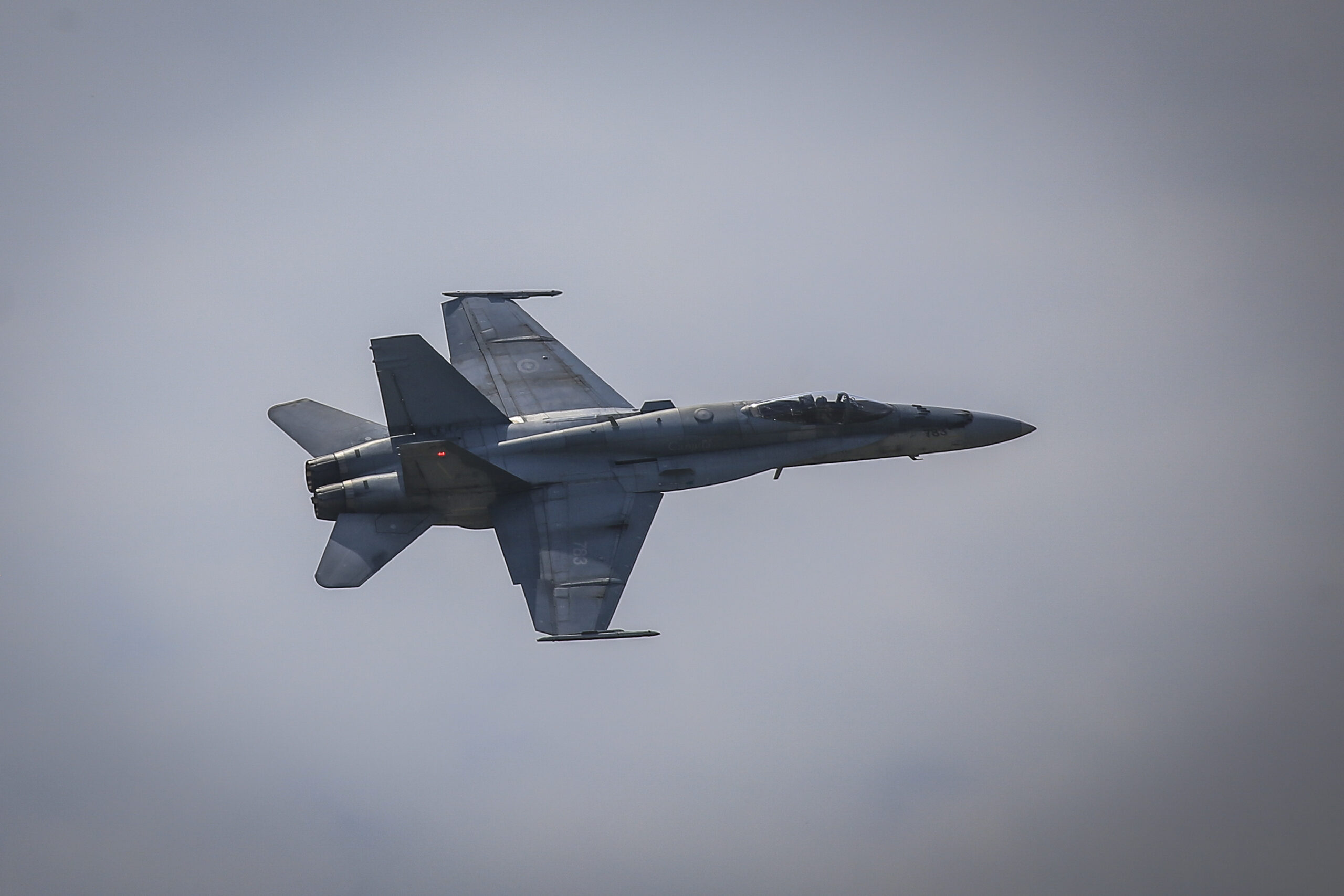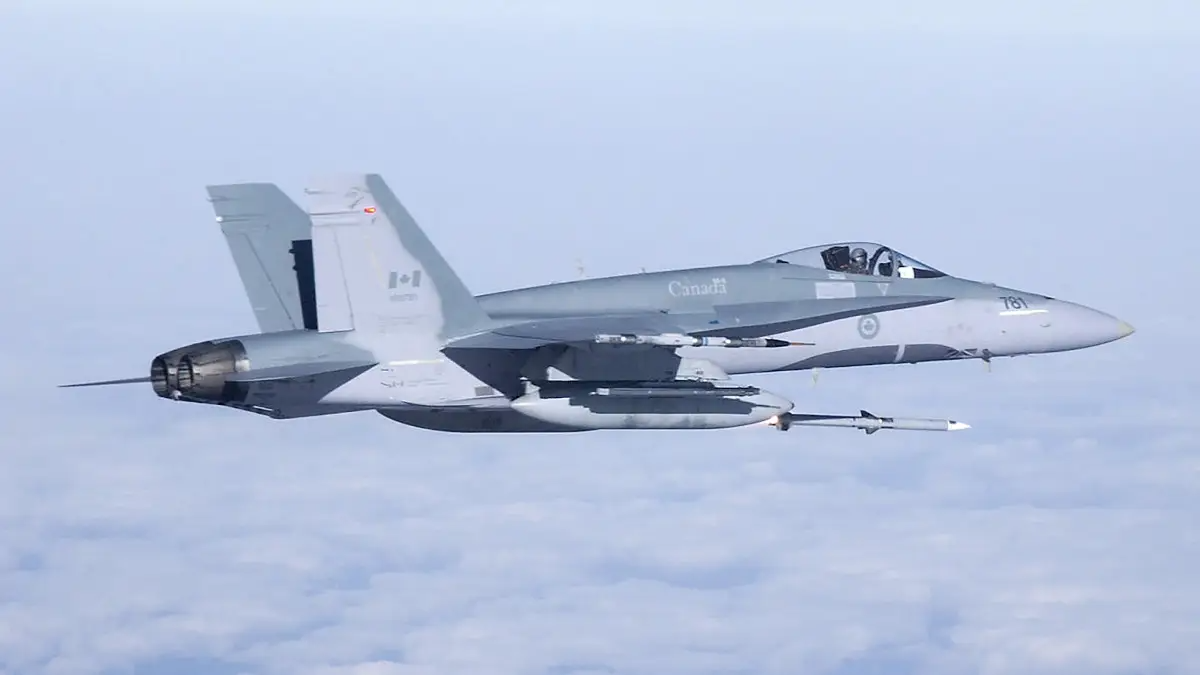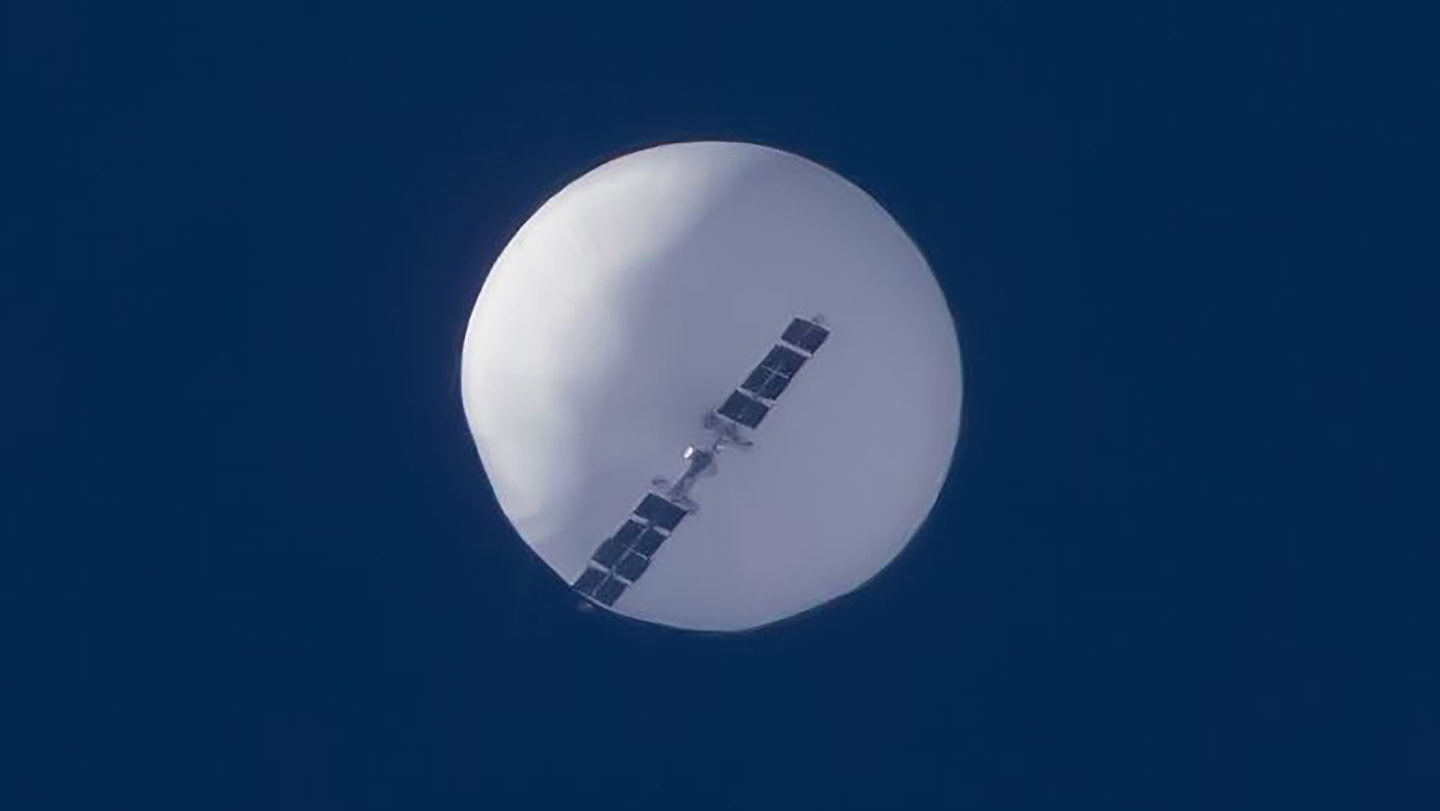A balloon, which the Pentagon says is a Chinese surveillance asset, is currently heading along a southeasterly path across the United States. U.S. officials say they considered shooting it down on Wednesday but decided not to over safety concerns. Many are now clamoring for them to try again for a host of reasons, but even attempting to do so is far more complicated than it appears at first glance.
As of yesterday, the balloon was passing over Missouri. It has been soaring at an altitude of around 60,000 feet, according to the Pentagon. Just how big it is is unclear, but the payload dangling beneath it, which features a number of solar panels and other equipment arranged on a truss-like structure, is between “two to three school buses” in total size, and “the balloon itself is much larger,” one unnamed U.S. official told CBS News. Readers of The War Zone can get fully up to speed on the overall situation with our continuing coverage here.
“Again, we currently assess that the balloon does not present a military or physical threat to people on the ground at this time,” Pentagon Press Secretary U.S. Air Force Brig. Gen. Patrick Ryder said in a press conference earlier today. “I can tell you that the U.S. government, [and] NORAD [North American Aerospace Defense Command], is monitoring this closely and we will continue to review options.”
Ryder declined multiple times to say specifically whether or not shooting down the balloon was still among those options.

At an earlier press conference Thursday night, a senior U.S. defense official had said an assessment of the threats posed by the balloon did not warrant the risks involved in trying to bring it down. “Even if the probability was low in a sparsely populated area of the debris falling and hurting somebody or damaging property” that engaging it still “wasn’t worth it,” they explained.
Some members of Congress are among a chorus of individuals vocally calling for it to be taken down, but, as noted earlier, this is easier said than done.
The most immediate issue is just how high the balloon is flying. When the possibility of shooting it down over Montana was considered on Wednesday, F-22 Raptor stealth fighters were sent all the way from Nellis Air Force Base in Nevada, more than 700 miles away. Sending F-22s was likely a necessity more than a choice, as the Raptor operates at higher altitudes than any other U.S. fighter, with around 65,000 feet being its maximum ceiling. This is critical for collecting visual intelligence on the balloon from aspects other than just below.
In regards to their ability to intercept the balloon and take it down, the F-22 carries three air-to-air weapons: the AIM-9 Sidewinder heat-seeking missile, the radar-homing AIM-120C/D Advanced Medium-Range Air-to-Air Missile (AMRAAM), and its internal 20mm M61 Vulcan cannon.

Using air-to-air missiles like the F-22’s specifically against balloons this one would be a challenge. This is because high-altitude balloons, despite being massive in some cases, can have a remarkably low signature, which creates guidance problems for missiles.
“[Balloons] have extremely small radar and thermal cross sections, making them relatively invulnerable to most traditional tracking and targeting methods,” read a report published by the Airpower Research Institute. “Estimates of their radar cross sections are on the order of hundredths of a square meter, about the same as a small bird. They also tend to move very slowly compared to traditional airborne targets, almost drifting on the wind similar to the chaff that modern Doppler radars are designed to ignore.”
In many cases, radars use Doppler shift — the movement of the target in relation to the sensor — for detection. If something is moving very slowly, the radar will either not detect it or actively filter out the target, depending on its mode and capabilities.
As of right now, it isn’t clear whether the Chinese balloon has sufficient heat or radar signature to be easily locked onto by an air-to-air missile. The large truss-like structure with its solar panels should help in this regard, especially in terms of radar signature. Oftentimes, high-altitude balloons carry radar reflectors so that they can be tracked more easily.
The kinematic aspects of using a missile to engage such a balloon are also dubious. If a guided missile was to successfully lock on to the balloon and carry out an attack, there’s a chance that the weapon could just whiff through the envelope and continue on its trajectory. While this would still puncture the balloon’s envelope, it won’t necessarily drop it out of the sky.
Most air-to-air missiles are not intended to destroy their target by physically smashing into it. They are instead generally designed to detonate their warhead via a proximity fuze, which is basically a radar or laser system that senses when something of sufficient size is nearby and allows the missile’s blast fragmentation warhead to detonate without the need for a direct hit.
Without solid material to trigger its proximity fuze, like a balloon is unlikely to do, this would leave the missile flying dumb through the atmosphere. Radar fuze systems are likely to be more problematic than laser types under these conditions. Regardless, firing missiles at an aerial target over the homeland outside of test or training events that occur under very controlled conditions is largely unprecedented and risks exist any time a missile is fired, regardless of the circumstances. These include it simply not igniting and falling to the ground below.
The idea that F-22s could release hot flares above the balloon, with them drifting down over it and destroying its envelope has also been raised. While that’s an interesting idea, the height and speeds involved would make doing so challenging and the balloon would still fall down to earth.
When it comes to surface-to-air missiles (SAMs), the options are even more limited. Basically, due to the altitudes involved, the Patriot air defense system would be the only system set up to do this. However, once again, achieving a lock on the balloon could be an issue for the Patriot’s radar and its interceptor’s radar seeker — the same issues apply to air-to-air missiles. Also, outside of training and limited testing, there are no active Patriot batteries in the U.S., and those that are available take time to move and set up.
Swatting a balloon down via aerial gunnery may seem like a much more attractive option, but it is also problematic.
Firing at a balloon with a fighter’s 20mm M61 Vulcan cannon invites significant levels of risk based on a number of factors. That is if the fighter can get within range of employing its gun effectively at all. The altitude is, once more, a huge factor, and getting above the balloon to engage it would be very important when it comes to mitigating risk. Here is where the F-22’s high-altitude capabilities would be critical, but even then it might be too high to execute a gun run without major risk. The aspect of the shot is key.
If the fighter can’t fly well above the balloon, a gun run would leave explosive cannon shells flying for miles on a ballistic arch, impacting a wide area below. The shells would still likely impact the ground if the fighter was able to make an attack from above on the balloon, but where they would land could be better controlled and more accurately predicted. Such a gun run at these very high altitudes, literally at the top of the aircraft’s operating envelope, is also problematic as maneuverability is greatly decreased the higher a fighter climbs.
As for the cannon rounds themselves, they would only likely cause small holes to be poked in the balloon’s massive envelope. Even high-explosive shells often carried by fighters on operational missions are triggered by a contact fuze designed to detonate by hitting something of substance, not the thin skin of a balloon. Training or armor-piecing rounds could be used, which could help minimize the destruction of the errant shells, but it would not fully alleviate the risk as their kinetic energy alone is still highly dangerous.
Even when the rounds penetrate the balloon, that wouldn’t guarantee that it would go down in any timely manner. Rather, the inflammable helium gas used to fill the envelope would seep out slowly, causing the balloon to gradually descend back to Earth. This could take hours or days and may lead to the balloon still traveling significant distances with no real guarantee of where it would land. This could also be the case if a blast fragmentation warhead of a missile would go off nearby, unless the shockwave was great enough to destroy the envelope.
A gun run on its payload truss could disable or degrade the balloon’s systems, but then it could also send debris falling along the balloon’s path unpredictably and it could ruin any chances of exploiting the hardware for intelligence value once it is captured. Also, such a precise gun engagement at a very high altitude would be challenging, to say the least. A steep angle downward attack would be nearly impossible due to where the truss is positioned below the balloon’s envelope, too.
There is a historical precedent for all of this, as well. In 1998, a rogue weather balloon from Canada deployed to measure ozone levels accidentally drifted away. BBC reported at the time that the airship was the size of a 25-story building and was operating at an altitude between 27,000 and 37,000 feet, so admittedly much lower than China’s balloon is now.
The incursion prompted attempts from Canada, the United Kingdom, and the United States to shoot it down, with two Canadian Air Force CF-18 Hornet fighters firing more than 1,000 rounds of ammunition from their own Vulcan cannons into the balloon off the coast of Newfoundland. That balloon took days to come down, at one point even gaining altitude and drifting across Canada and then out over the Atlantic Ocean, which made for a problematic situation for regional air traffic.

However, it’s worth noting that how the Chinese balloon might react to any impacts will of course have to do with exactly how it is constructed, which is not immediately clear, together with its altitude. Certain materials are more fragile than others — with latex and polyethylene being two examples that are used to make these balloons — and their integrity changes when the balloon is inflated to different levels. The construction of the envelope itself is also a factor.
The Associated Press in 1998 reported that the CF-18s were also equipped with unspecified air-to-air missiles at the time of the incident. The weapons were ultimately not used for the sake of both protecting the population below and saving money on what likely may have proven to be a fruitless effort.
“Citizens would not have appreciated having a missile blowing over their heads,″ Maj. Roland Lavoie, who at the time was a Canadian Air Force spokesman, said to Associated Press that year. “Also, it might be overkill spending a couple of hundred thousand dollars on a missile to shoot down a balloon that’s drifting away.”

“Even if successfully engaged by a [surface-to-air missile], fighter, or a future directed energy weapon, [weaponized stratospheric airships] are inherently survivable,” U.S. Air Force Maj. Kevin B. Massie wrote in an academic paper he completed at the Air University’s Air Command and Staff College in 2009 specifically on these types of balloons. “WSAs will likely contain inert helium as their buoyant gas, thus there will be no flaming wreckage like the Hydrogen-filled dirigibles of the early 20th century.”
“At operational altitudes, WSAs have an over-pressure of less than one pound per square inch. Holes created by damage result in slow leaks and slow descents,” Massie continued. “However, since the loss of pressure eventually leads to a loss of aerodynamic shape, a damaged WSA needs to transit immediately to a recovery location.”
JP Aerospace’s founder John Powell, an expert in lighter-than-air craft, including very exotic ones, confirms the reality of the small signature that high-altitude balloons present and how poking holes in them with guns and missiles won’t send them careening into the ground in his video below.

Directed energy, like lasers or high-power microwave (HPM) weapons, have also been discussed as a potential option for engaging and taking down the Chinese balloon. It isn’t difficult to see how a laser could effectively burn a hole into an otherwise weak balloon envelope without any of the secondary effects of a traditional kinetic weapon, but there is just one problem — they do not exist in a relevant, operational form.
Such a weapon would need to be lofted up high in the air, and there’s no such laser in existence, either in an operational or in a semi-operational state, for fighter aircraft at this time. This kind of capability is rapidly advancing and it won’t be long till we see it at the ready, but outside of some exquisite classified test asset — which could be problematic to use regardless — this simply is not an option. Even a laser on a larger aircraft that can fly at normal altitudes does not exist in an available, unclassified state at this time.

Without an aircraft as a platform, the laser would have to engage the balloon from miles away on the ground. Lasers, even with cutting-edge adaptive optics, defuse in the atmosphere over distance. This is especially true when firing up through the thick and turbulent atmosphere near the ground. This means engaging the balloon from the ground would be challenging. And very high-power systems currently in testing are large, cumbersome installations, with lower-power lasers that are more mobile-only being relevant for close-range engagements. Maybe under just the right circumstances one of these lower-power systems could be effective against the balloon’s weak skin, but it is not clear exactly what those conditions would be at this time.
None of this means that the balloon could just go about its mission unmolested. Jamming its ability to communicate with its controllers could result in what is akin to a mission kill. At the same time, jamming any radar or electronic intelligence collection devices could also hobble its mission severely. The same can be said with blinding any optical systems with low-power lasers. Now, as to the likelihood of any of this actually happening and what platforms are being used to do so, we cannot say.
The Pentagon did say that it has taken mitigating steps to hamper what the Chinese balloon can collect while it floats over the U.S., but won’t say what they are.
“But out of an abundance of caution, we have taken additional mitigation steps,” the senior defense official said on Thursday. “I’m not going to go into what those are. But we know exactly where this balloon is, exactly what it is passing over. And we are taking steps to be extra vigilant so that we can mitigate any foreign intelligence risk.”
So, what’s the solution? Taking everything into account, maybe the most obvious would be to have F-22s, other fighter assets, or even a Navy Aegis-equipped surface combatant, shoot the balloon down just after it passes over the east coast into the Atlantic. This would largely eliminate the risk to life and property on the surface below. There, ships can be waiting to track the balloon’s descent and recover its hardware for intelligence exploitation.
But who knows, maybe the Pentagon will go a different route and surprise us. Regardless, this whole equation changes once the balloon is safely over the water.
Author’s note: The incredible image at the top of this article was taken by photographer Tyler Schlitt of LiveStormChasers.com. Make sure to check out his work, including on his awesome Facebook page linked here.
Contact the author: emma@thewarzone.com
